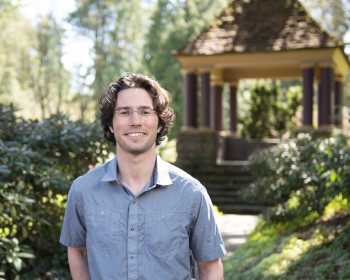The History of Incarceration Turned Inside-Out
In late April, 15 students from Lewis & Clark and 15 students from the Columbia River Correctional Institution performed an original theatre piece as the culmination of their Inside-Out history course, Crime and Punishment in the United States.

Credit: Stephen Mercier
In many ways, History 338 Crime and Punishment in the United States, seems like a typical 300-level course. Under the guidance of Associate Professor of History Reiko Hillyer, 30 students engage in lots of reading, lots of writing, and lots of discussion.
But this is hardly one of Hillyer’s usual classes. This course takes place weekly at the Columbia River Correctional Institution (CRCI). Fifteen of the students are “inside” students—meaning they are Adults in Custody (AICs) at CRCI—while the other fifteen are “outside” students who are juniors or seniors at Lewis & Clark. The course is extremely popular; to be selected, L&C students must submit a pre-enrollment essay on why they want to take the course.
Once the semester-long course begins, there are strict parameters for class interactions. All students are required to go by first names only to ensure a degree of personal privacy. And any direct inquiries about crimes or sentences are off-limits, as is any personal communication or contact between inside and outside students beyond the scope of the class.
On this day, April 28, the students come together one last time to present their course’s culminating project: the world premiere of their theatrical composition, I Think of You.
Classroom 4 serves as the green room for the performers. The room is austere: concrete floors, well-worn plastic chairs with tables pushed to the sides, overhead lighting, no mirrors, a broken popcorn machine in the corner with a handwritten “DO NOT USE” sign taped to the glass. But the camaraderie among the actors warms the space as they review their notes, call to each other, and resist gentle instructions to form a circle and start their preshow warm-up.
Hillyer has taught this course every other year since 2012 after receiving training from Inside-Out Prison Exchange in Philadelphia in 2011. Hillyer’s Inside-Out courses proved to be so meaningful for all involved that she has worked with campus partners, such as the Center for Community and Global Health—as well outside sources, including the Whiting Foundation, the Mellon Foundation, and the Oregon Community Foundation—to train more professors and offer a wider selection of courses. At this point, four professors are able to offer four courses, and two more faculty will receive training this summer.
The 2019 Whiting Foundation grant enabled Hillyer to incorporate theatre into the history course. Rebecca Lingafelter, associate professor of theatre, came on board as a coteacher and production director. In 2019, Hillyer and Lingafelter facilitated the creation of the first Inside-Out theatre piece performed at CRCI. It was an emotional, powerful performance for an audience of family, friends, CRCI staff, and other AICs.
Everyone wanted more, and after a COVID hiatus, the class was back in person this year.
“Today’s experience is about remembering the experience you’ve had together,” says Lingafelter. “It’s you talking to you, being the incredible people you are.” As the performers head into the chow hall for the show, inside student Yogi instructs, “Prepare for something amazing!”
The performance begins with Native American drumming and chanting, performed by inside students of indigenous descent. Hillyer, who is visibly emotional, explains in her welcome that this “circle of tradition” invokes the circle that students sit in during each class. The classroom circle, she explains, is a place “where everyone is equal, where everyone has a voice, where each person is committed to one another’s healing.”
I Think of You
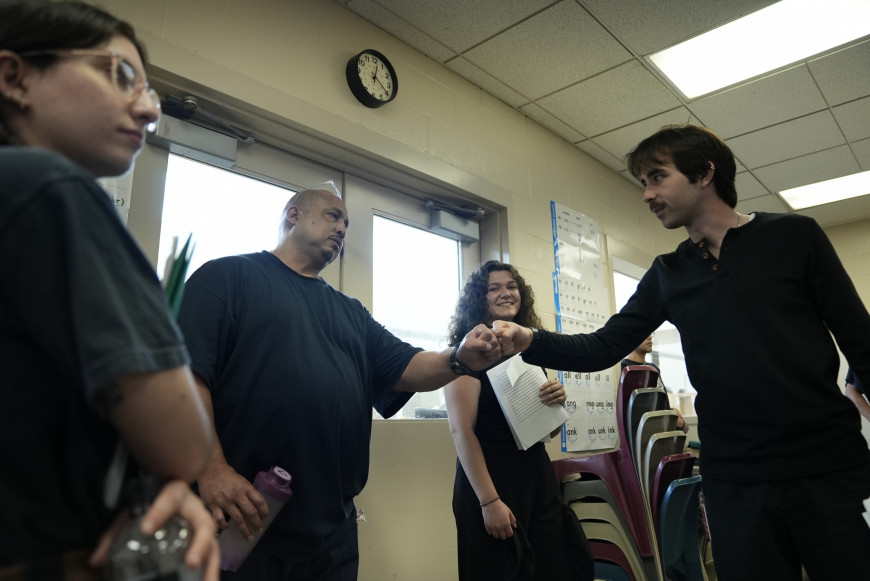

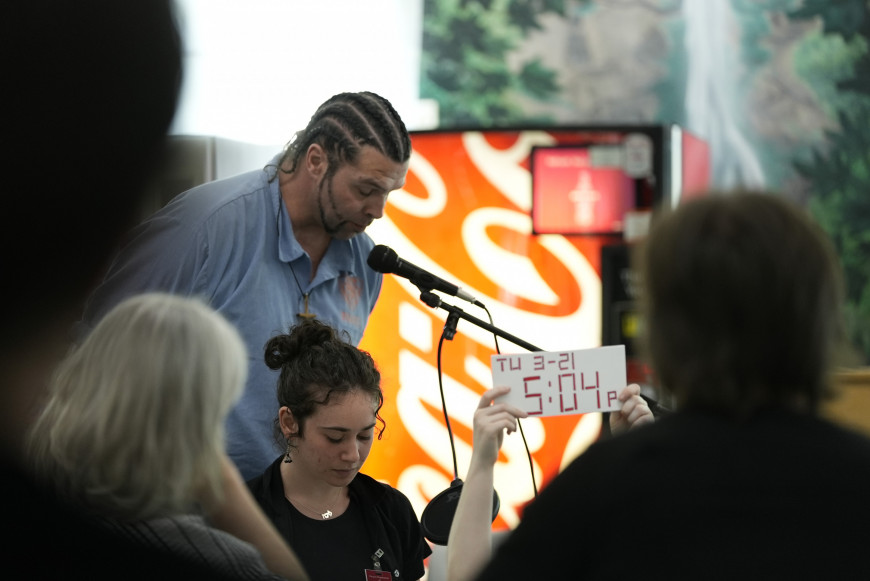
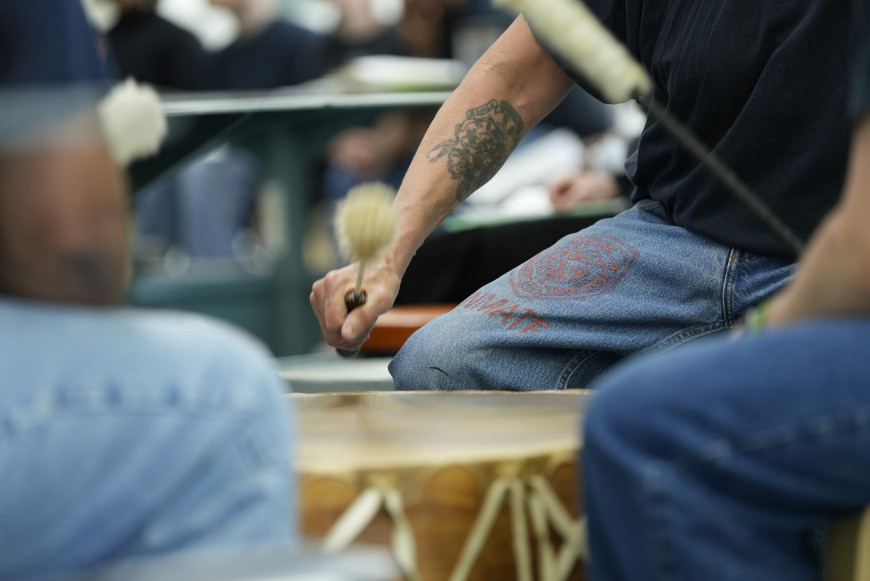
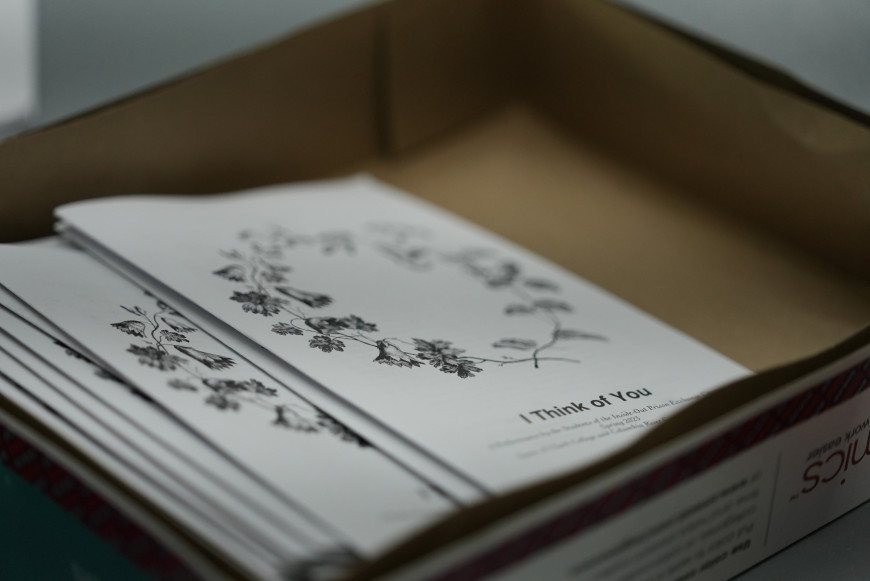
That mutual commitment is palpable during the performance. The 10 scenes—derived from the students’ own writing and spanning narrative text, poetry, and song—deliver a brief history of mass incarceration in the United States. Inside experiences are juxtaposed with outside, personal stories demonstrate how similar childhood experiences can diverge down completely different paths.
Twice the production is interrupted by announcements over the PA letting AICs know that people are needed in the medical wing, or that Veteran’s Club is about to begin. “Welcome to prison!” quips one of the AIC performers.
The conclusion of the performance is met with an immediate standing ovation. During the post-performance Q&A, AICs and Lewis & Clark students alike offer their thoughts on what could make prison more humane, how they built trust, and what they got out of the class.
The deep self-reflection was hard-won; a few AICs note that they almost dropped the class because the emotional intensity was overwhelming at first. But, as one of them explains, by the end, there was a class session where the level of trust and openness was such that “nearly all of us cried.”
The students head back to Classroom 4 for an after-party and goodbyes. They share “outside” food—charcuterie, cheese, French macarons, guacamole—a rare treat for the inside students, and struggle to find the right parting words. These farewells are profound, and in most cases, permanent. What the students in this class have learned has gone far beyond the intellectual content of the readings and discussions.
History 338 advocates for a critical reexamination of the criminal justice system and encourages students to educate themselves about the reasons for America’s burgeoning prison population. But Hillyer says the course is also about “community, justice, and compassion [ … ] We practice unifying the mind, spirit, and body, unifying those on the outside and the inside, so that we can all become more whole, and more free.”
Thanks to a $75,000 grant from the Oregon Community Foundation Creative Heights initiative—and support from Portland Center Stage—an adaptation of I Think of You will be performed by professional actors at PCS the weekend of August 25–27, 2023. Performances will be accompanied by community programming, panels, and workshops. Tickets are free!
Inside-Out Feature Story (Fall 2019) Student Reflection Pieces (2017)
History Theatre
More Newsroom Stories
Public Relations is located in McAfee on the Undergraduate Campus.
MSC: 19
email public@lclark.edu
voice 503-768-7970
Public Relations
Lewis & Clark
615 S. Palatine Hill Road MSC 19
Portland OR 97219
